In 1994, a group of us kayakers organized and executed a self-led kayak camping trip at Johnstone Strait, on the north coast of Vancouver Island, BC. It was almost pure bliss. Twenty-five years later, my wife and I joined Sea Kayak Adventures on a six-day kayak camping trip. I’m shocked at the changes.
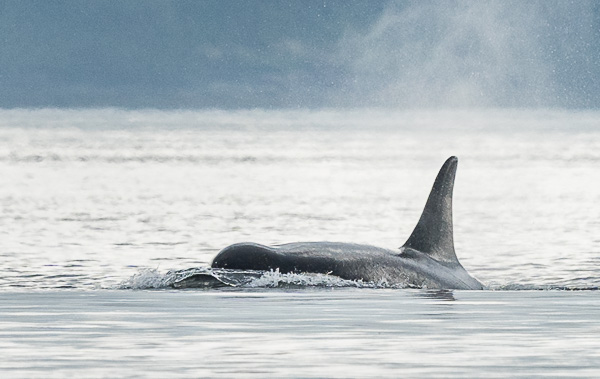
One thing hasn’t changed, though: Johnstone Strait is the best place in the world to see orca (killer whales). It was then; it is more so now. The resident (fish eating) orca population here ballooned from about 200 whales in 90’s to 309 by 2017. In 1994, we hung out at Kaikash on Johnstone a couple days before seeing orca. This year, every day we witnessed multiple pods pursuing salmon along the Johnstone shore or in Blackfish Sound. Orca also meander through Johnstone in route to the celebrated rubbing beach in the Robson Bight Ecological Reserve.
These northern resident orca are thriving, stark contrast to the southern resident orca of Puget Sound. In the South orca numbers are down to 73. They can no longer be counted on to summer in the San Juan Islands of Washington State. Symptomatic was the 2018 viral story of southern resident J35, Tahlequah, who carried her dead calf for 17 grief-stricken days following the calf’s death. The southern orca are in trouble─from pollution, from boat traffic and especially from diminished food. Their favorite prey, Chinook salmon, are in decline. If you want to see orca, head north.
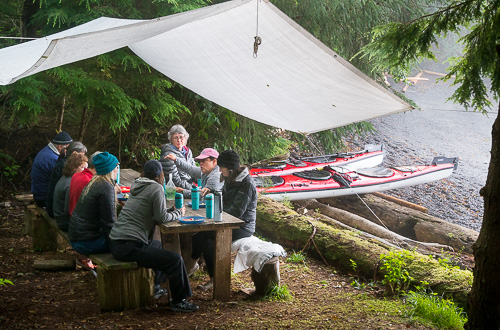
This year, our exploration again departs from Telegraph Cove. I’m here to photograph for Sea Kayak Adventures (Row Adventures). The group is a large one: 14 guests and three guides. Over six-days, we paddle along Johnstone to Hansen Island, across Blackfish Sound to Swanson Island, then back to Vancouver Island. We camp at three locations, sleeping on cots in tents set on wooden platforms. Our guides plan each day based on weather and tides, prepare meals and snacks, provide natural history lessons and keep us safe. Our kayaks are a mix of singles and doubles, and straight away both guests and guides are mixing it up so guests have an opportunity to paddle singly if they desire.
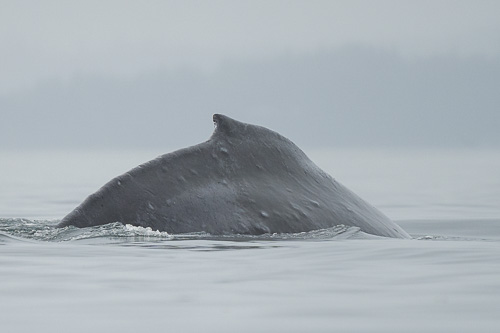
Day one, we cross Johnstone Strait to Hansen Island, and spot our first orca and then humpback whales. Alongside the humpbacks are sea birds and flocks of small birds (phalaropes?), but I’m too far off to be sure. At lunch in a Hansen cove, we observe a mother harbor seal nursing a pup. After padding to camp and stowing kayaks and gear, guide Daniella leads a forest walk that ends at an enormous cedar tree. We return to a dinner featuring sockeye salmon. It’s been a relaxing day, and a satisfying one viewing wildlife.
I picked a moonless week for our mid-summer booking to assure big tides for tide-pooling, with the hope, too, that we’d get a clear dark sky to shoot the Milky Way. Our weather, though, trends mostly cloudy, with drizzle and rain, precluding starry night shots.
With the tides I expected came big, swirling currents. This causes the guides to rouse us at 5am from our first camp, an early start essential to slip Blackney Passage at slack.
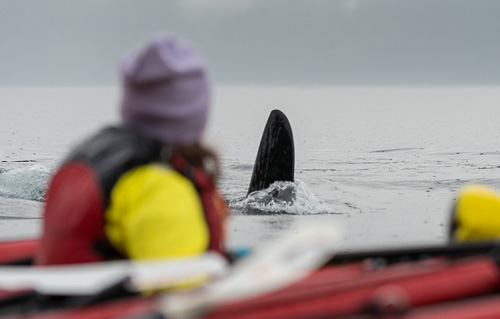
We launch in overcast drizzle. Lucky us. Still bleary-eyed despite coffee, just after we get underway an orca pod passes right by our rafted group. Oh so close. A big male arches its enormous dorsal right in front of us to screams of delight. Me, I am out of position behind everyone. I miss the shot.
We make safe passage through Blackney, and crossing Blackfish Sound we view humpback whales once again. We paddle close to a flock of migrating red-necked phalaropes as we approach the next camp on Swanson Island.
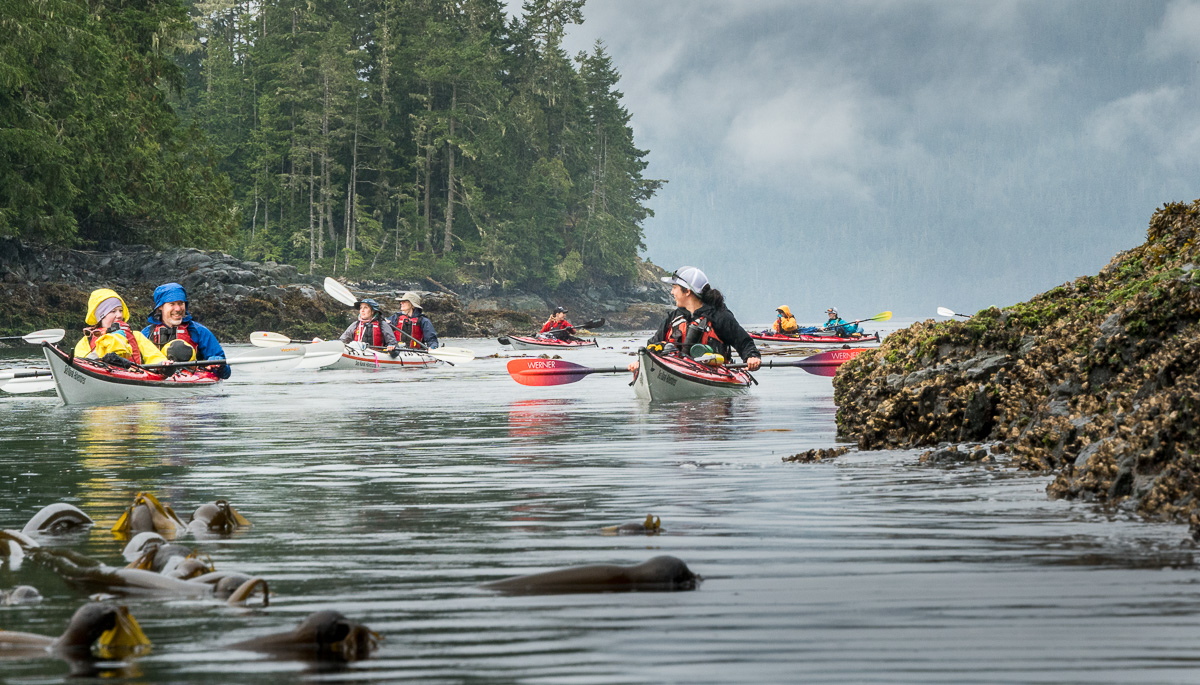
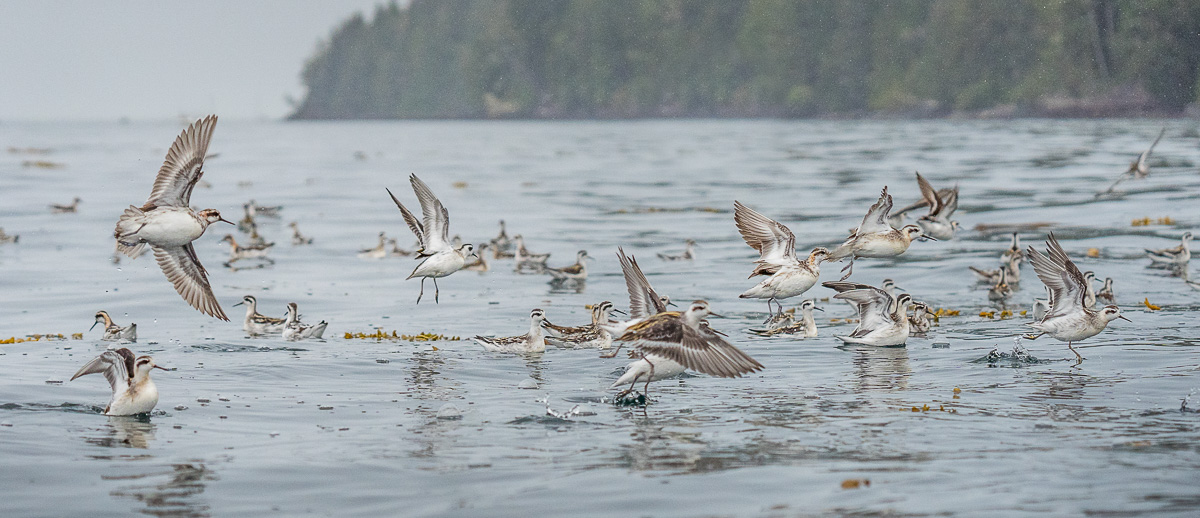

Soon after settling into camp, we gather on a rocky perch with expansive views of Blackfish Sound. Whales and dolphins surface and blow: humpbacks feeding singly, pods of Pacific white-sided dolphin and harbor porpoise, orca pods off shore.
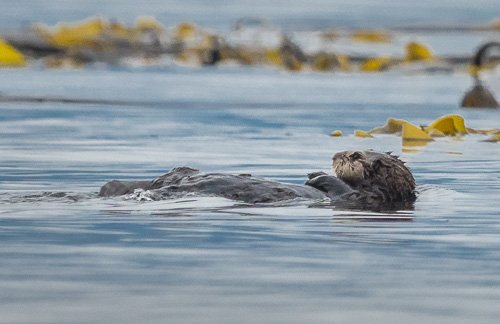 Before dinner a few of us paddle northwest along Swanson. We encounter a mink, bald eagles, belted kingfishers, distant humpback whale blows. Then a lone sea otter surfaces munching an urchin. Sea otters were re-introduced to the outer coast of Vancouver Island in 1969. From Cape Scott to Barkley Sound, their numbers are now about 3,000; their range still expanding. Seeing them here is another first. Sea otters are a keystone species. Their appetite for urchin promotes the kelp forests upon which many fish and invertebrates depend.
Before dinner a few of us paddle northwest along Swanson. We encounter a mink, bald eagles, belted kingfishers, distant humpback whale blows. Then a lone sea otter surfaces munching an urchin. Sea otters were re-introduced to the outer coast of Vancouver Island in 1969. From Cape Scott to Barkley Sound, their numbers are now about 3,000; their range still expanding. Seeing them here is another first. Sea otters are a keystone species. Their appetite for urchin promotes the kelp forests upon which many fish and invertebrates depend.
That night, nearby humpback whale blows (or breaches?) thunder like gun-shots. The humpback numbers astonish compared to my earlier visits, when there were none.
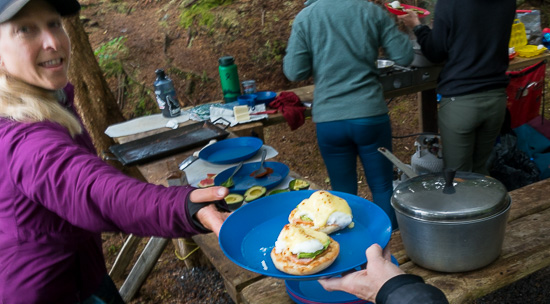 After an eggs benedict breakfast, we launch as the marine fog lifts. Our course meanders through channels and around islets of the Broughton Archipelago. We witness a native pictograph, then paddle to lunch on a midden of crushed shells, a remnant from a Native American past. We spot more humpback whale blows when we leave the channels and emerge at Blackfish Sound.
After an eggs benedict breakfast, we launch as the marine fog lifts. Our course meanders through channels and around islets of the Broughton Archipelago. We witness a native pictograph, then paddle to lunch on a midden of crushed shells, a remnant from a Native American past. We spot more humpback whale blows when we leave the channels and emerge at Blackfish Sound.
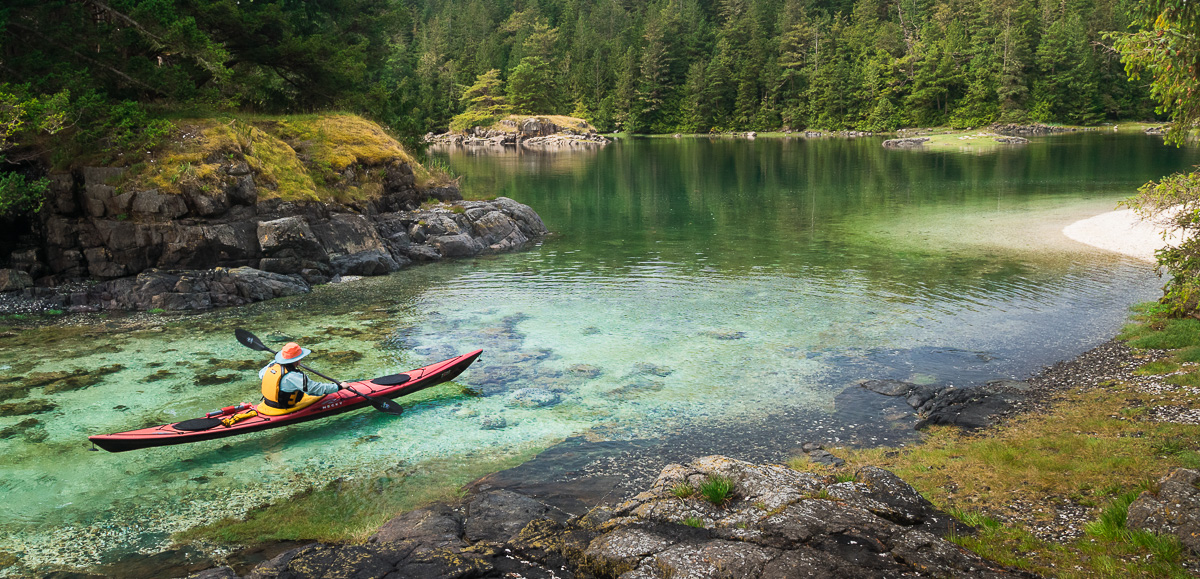
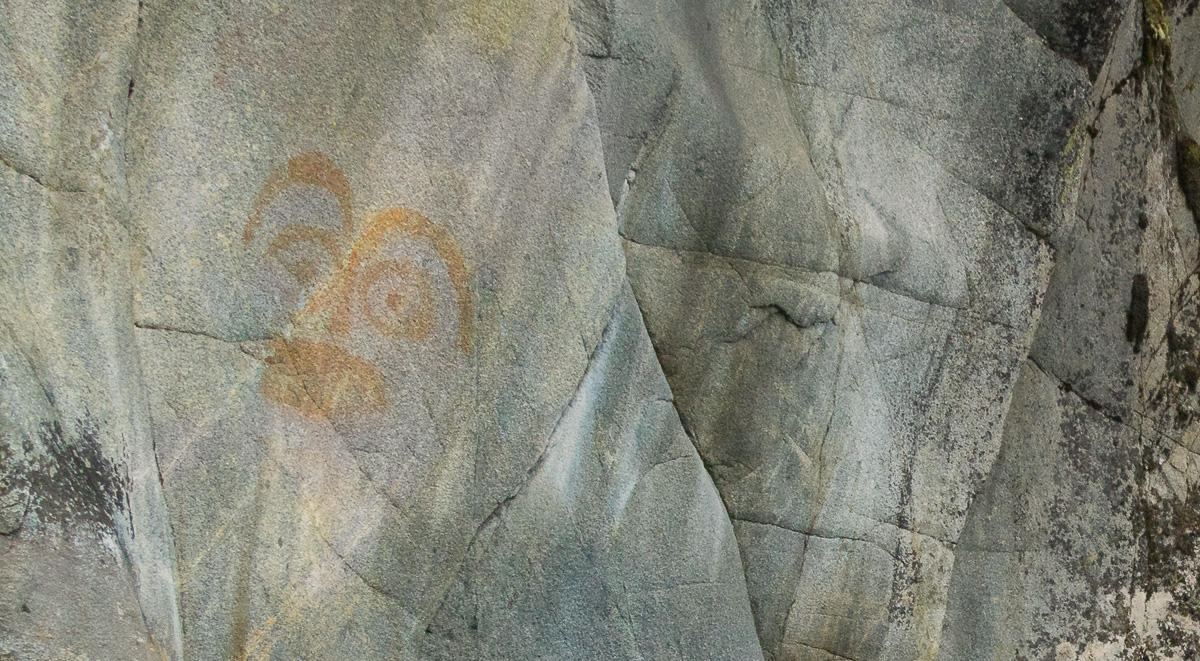
It rains hard that night, our last on Swanson. Summer’s on the wane, but as I walk to the kitchen for morning coffee I hear the sweet songs of Swainson’s and Varied Thrush, and Pacific Wren. At coffee, I over-hear a guide calling August “Fog-gust”. This morning, August 1, is indeed thick with fog.
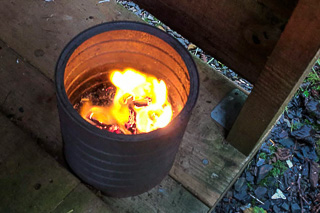
Our guides are all about “leave no trace” camping. This includes disposal of, dare I mention, #1 and #2. #1 is easy; #2 not so much. Each of our camps has a sheltered outhouse, the toilet for #2 only. We’re also instructed to put soiled TP in a coffee can and then burn it. I’m all in for that, but this morning I forget and drop the TP in the pit. Oh no. I carefully fish it out, drop it in the coffee can, and spark the Bic lighter. The TP smolders and then burns. A hand wash station is nearby, so no worries.
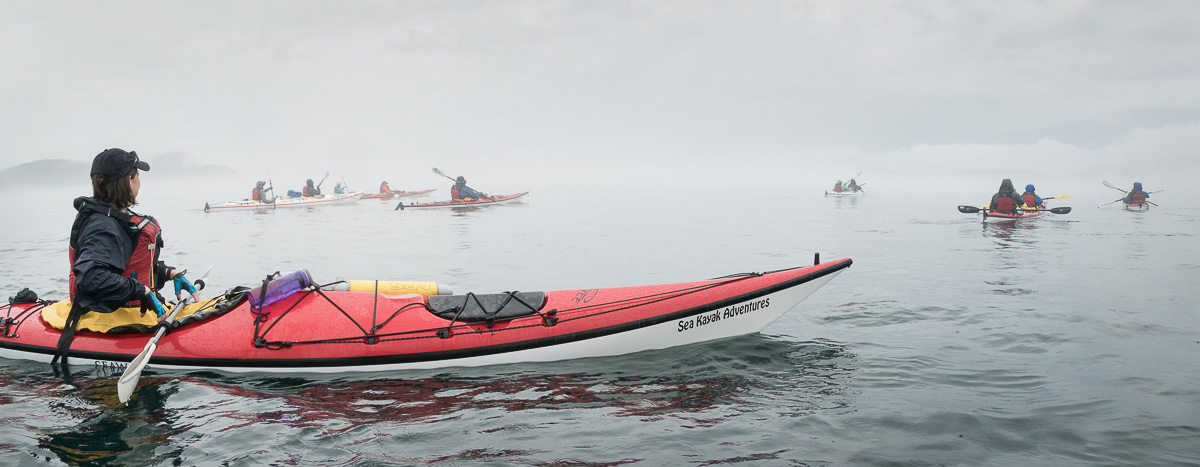
We break camp, cross Blackfish Sound and then Johnstone Strait in soft drizzle and fog. The crossing is enchanting, with bird sightings of common loon, rhinoceros auklet, harlequin duck, surf scoter, and then semi-palmated plover and spotted sandpiper near shore. The guides use GPS to keep our direction, and radio to communicate with nearby ships. Crossing Johnstone, a ketch with full sail emerges silently like a ghost in the fog. We close ranks briefly and watch its passing.
At the Kaikash camp, I watch a raven devour an urchin on the beach. When he flies off, I pick up the spent shell to show the group, and guide Rae uses it as a teaching moment. Urchins are Echinoderms. They share a radial symmetry of five rays, and include urchins, sand dollars and sea stars. That evening, Rae gives an orca talk, explaining the difference between the fish eating (Resident) and mammal eating (Transient) orca. They have distinct prey, language and culture. Despite similar appearances, they don’t interbreed.

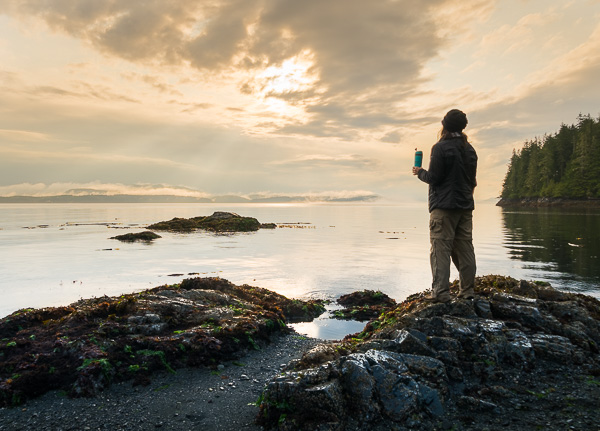 Rain pelting tents disrupts our sleep at Kaikash that night, despite earplugs. My zoom lenses fog internally from the day’s exposure and the deluge, and, with the 100% humidity, they need a night in the drybox with desiccants to recover. I estimate three inches of rain in 24 hours, a possible record for August.
Rain pelting tents disrupts our sleep at Kaikash that night, despite earplugs. My zoom lenses fog internally from the day’s exposure and the deluge, and, with the 100% humidity, they need a night in the drybox with desiccants to recover. I estimate three inches of rain in 24 hours, a possible record for August.
The next morning is glorious. First a humpback whale swims by offshore, then two orca, one accompanied by a dolphin. The sun punching vainly through clouds creates an exquisite sunrise.
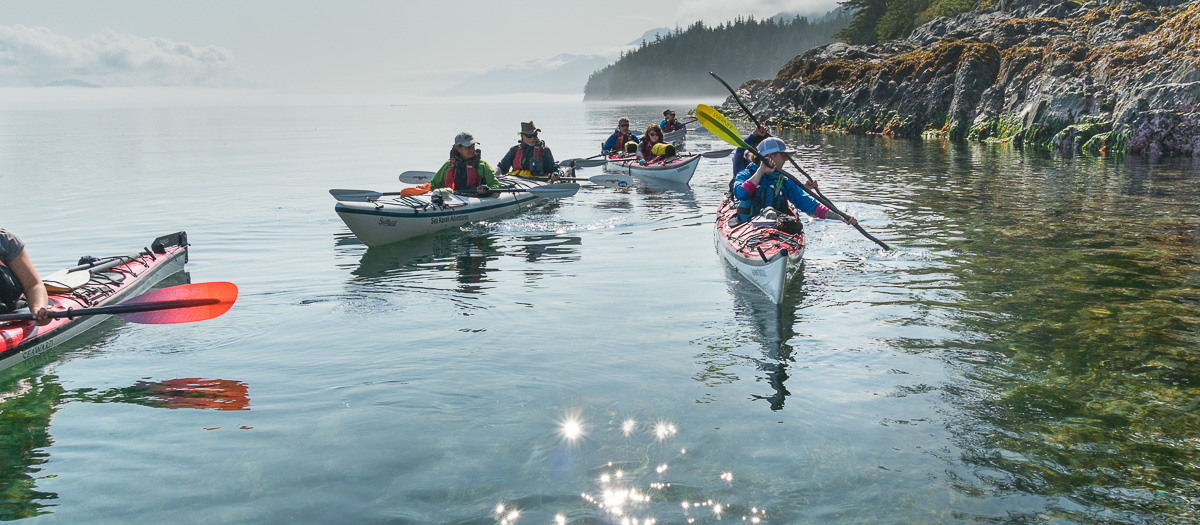
The skies clear somewhat as we depart for a paddle east down the coast to Robson Bight. That morning and the next (our last one) provide some fine tide-pooling by kayak, as the timing for the low tide coincides with our morning departures. We hug the shore, cameras out, studying the seascape, marveling too at the creeks and seeps disgorging the prior night’s rain. There’s so much flow at Kaikash Creek some of us practice a few eddy turns.
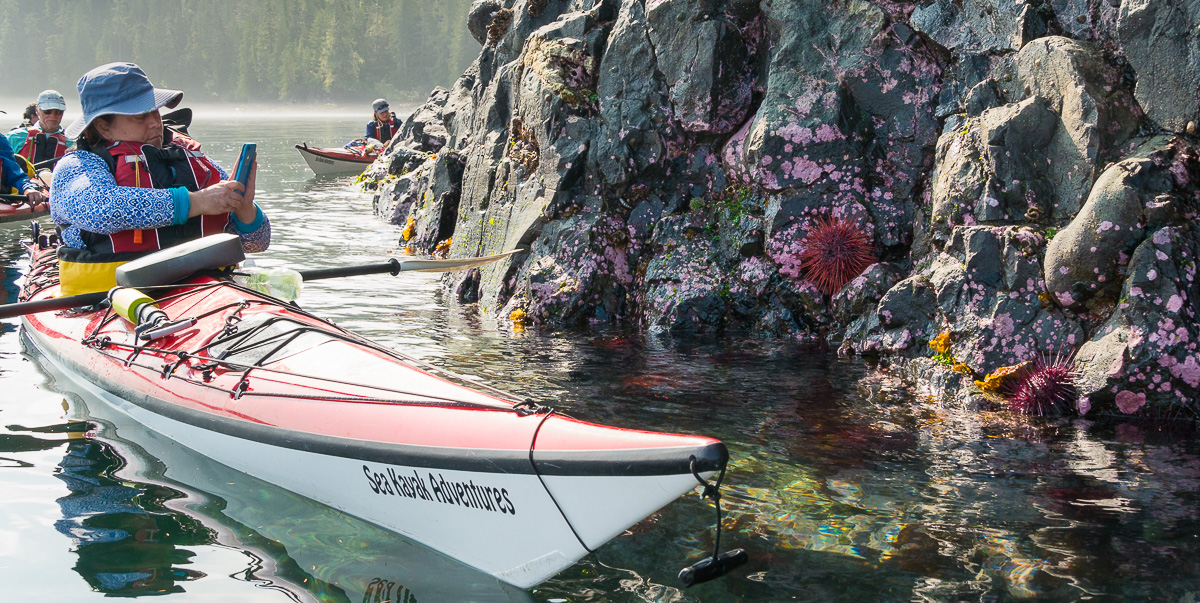
Huge red sea urchins populate the rocky intertidal. Their numbers skyrocketed due to the disappearance of sea stars from a Sea Star Wasting Disease that started in 2013. 20 or more species of sea star were affected on the Pacific Coast, from California to Alaska. We see only a few ochre, leather and mottled sea stars, and no sunflower stars, nowhere near the numbers we found in the past. In 1994, I shot seascapes with sea star foregrounds, and many rock outcrops and even the gravel intertidal were full of them. Instead we have herbivorous urchins that in places have scraped the rocks clean. The loss of the sunflower star is particularly hurtful in that they prey regularly on urchins.
In a 2018 first-of-its-kind BC study, scientists discovered the microbial balance of a sea star has a huge effect on outcomes. Healthy sea, healthy stars. BC researchers also found a significant interplay of sea otters and sunflower stars with urchin numbers. Both are keystone species. Without the otter, urchin numbers climb and kelp and fisheries suffer. Turns out sunflower stars help maintain balance by eating urchins as well. The sea is a complex place; we have much to learn.
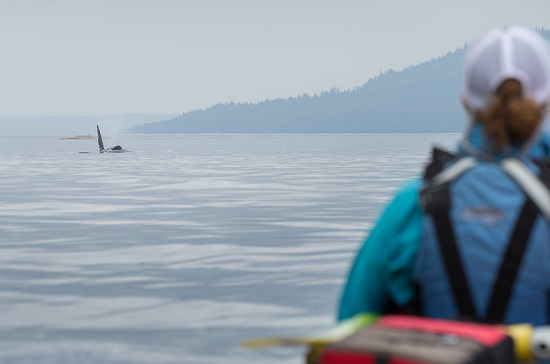 We see a few orca as we approach Robson Bight. One big male appears headed right towards us. We raft up per protocol, but he next surfaces inshore so we don’t get close views. Ashore later at lunch, a multi-story cruise ship churns by. Guide Becky quickly ties the kayaks together and tows them to deep water, like a tugboat hauling logs. Minutes later, a huge waves that could have swamped the boats crashes the beach.
We see a few orca as we approach Robson Bight. One big male appears headed right towards us. We raft up per protocol, but he next surfaces inshore so we don’t get close views. Ashore later at lunch, a multi-story cruise ship churns by. Guide Becky quickly ties the kayaks together and tows them to deep water, like a tugboat hauling logs. Minutes later, a huge waves that could have swamped the boats crashes the beach.
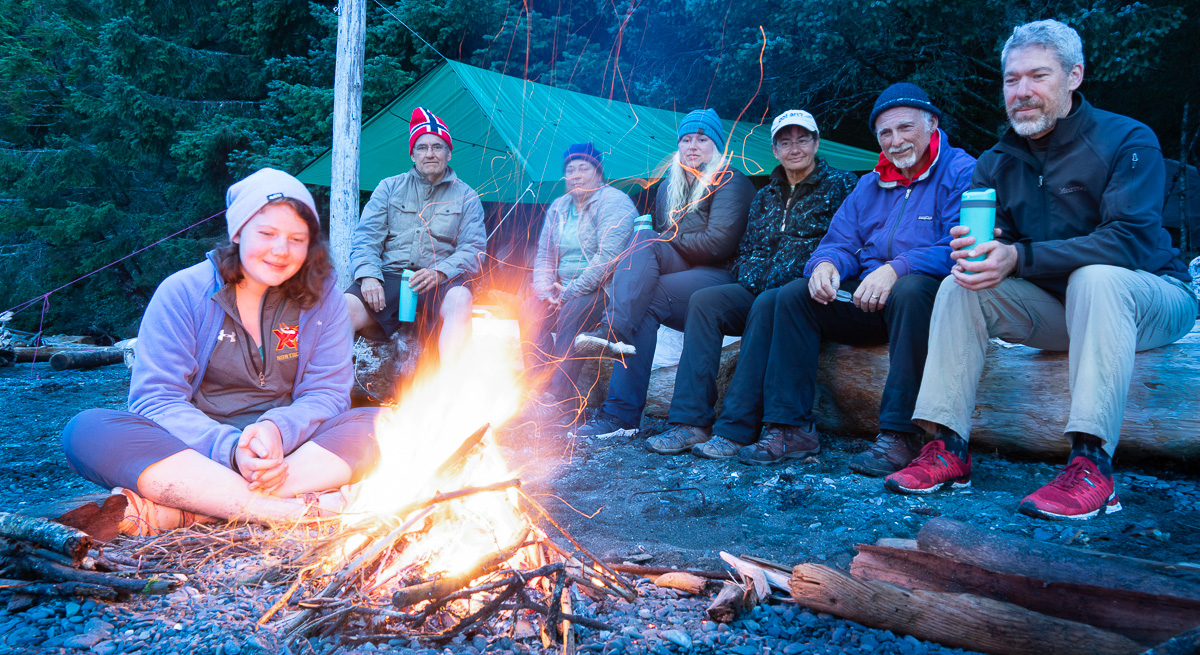
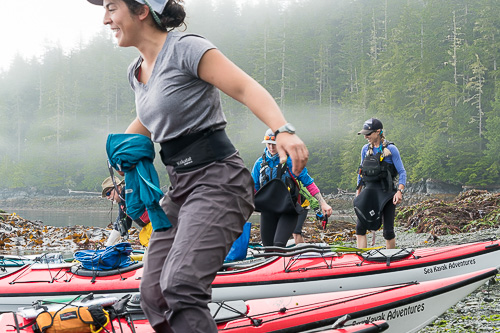 Our last morning, it’s “Fog-gust” once more, but the mist quickly clears. We load the kayaks, hop in, and enjoy again an eye-candy intertidal as we paddle back west to Telegraph Cove and journey’s end. Kate and I choose to head home. We drive down Vancouver Island, catch the 8pm ferry, and arrive content at our Kirkland home to sleep in our own bed about 2am.
Our last morning, it’s “Fog-gust” once more, but the mist quickly clears. We load the kayaks, hop in, and enjoy again an eye-candy intertidal as we paddle back west to Telegraph Cove and journey’s end. Kate and I choose to head home. We drive down Vancouver Island, catch the 8pm ferry, and arrive content at our Kirkland home to sleep in our own bed about 2am.
Photographer Gary Luhm has partnered with Sea Kayak Adventures on guided trips spanning a decade.
Sign on for the 6-day Blackfish Waters Orca Kayak Tour or other adventures at: https://www.seakayakadventures.com/vancouver-island-orca-kayaking
For more info on the sea star wasting disease, have a look at these BC-produced videos:
https://www.youtube.com/watch?v=MlHjtruzxhY
For info on the plight of the southern vs northern resident orca, see: http://projects.seattletimes.com/2018/orcas-in-peril/
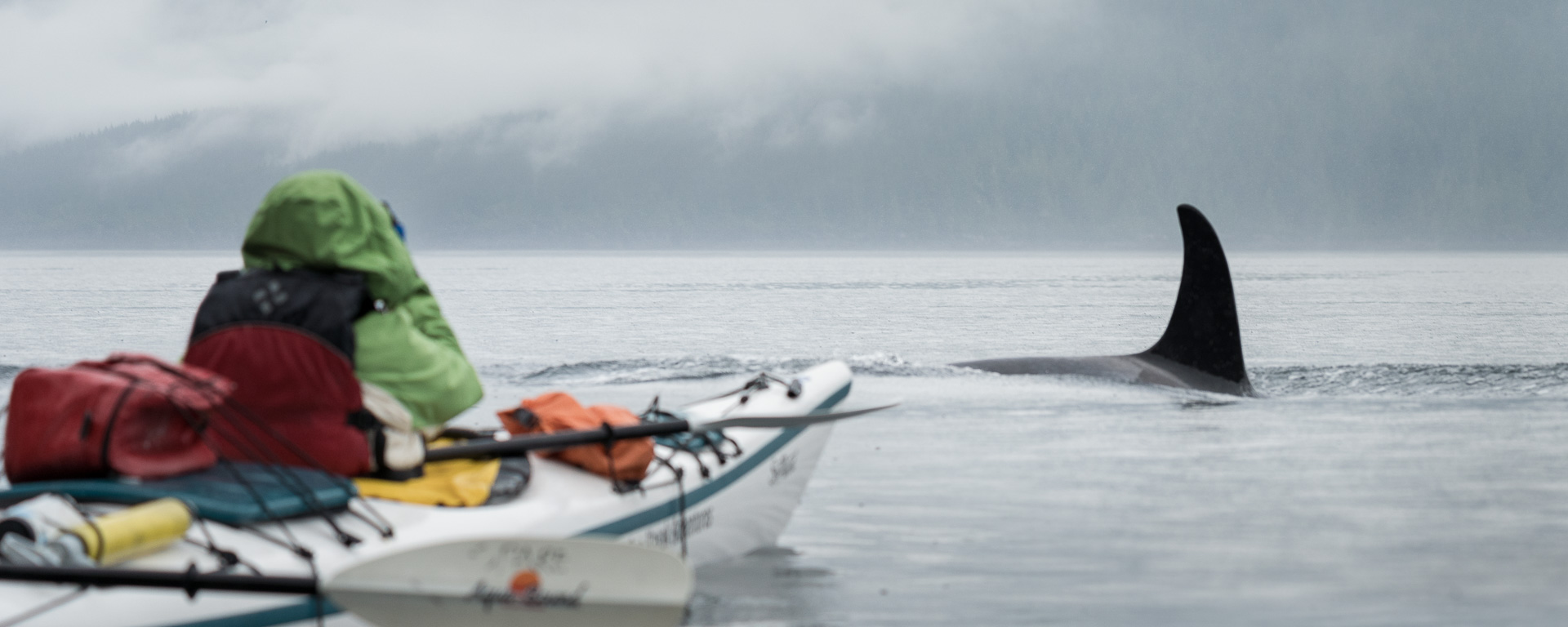
Great article. Amazing photos given all the rain.
Thanks, Dan. I was lucky to have six days to shoot.
Great journalling of a wonderful (albeit soggy) trip. Thanks for taking so many fabulous pictures of us!
Thanks, Lin. I neglected to post my favorite soggy pic, from when we were packing to leave Swanson, in the wet and the drizzle, and everyone is smiling.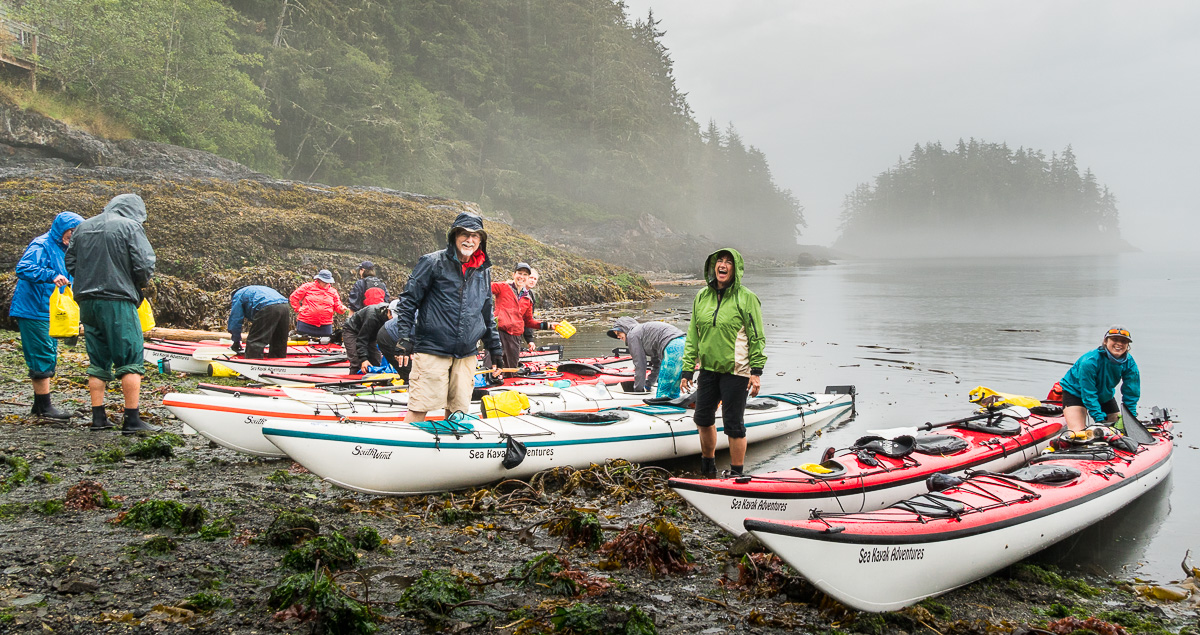
Your recounting of your trip is inspirational. It’s all about the protection of that experience. May our great great grandchildren paddle with the Orcas.
Thanks, Wendy. I want to say “let’s make it so” but at least let’s do what we can.